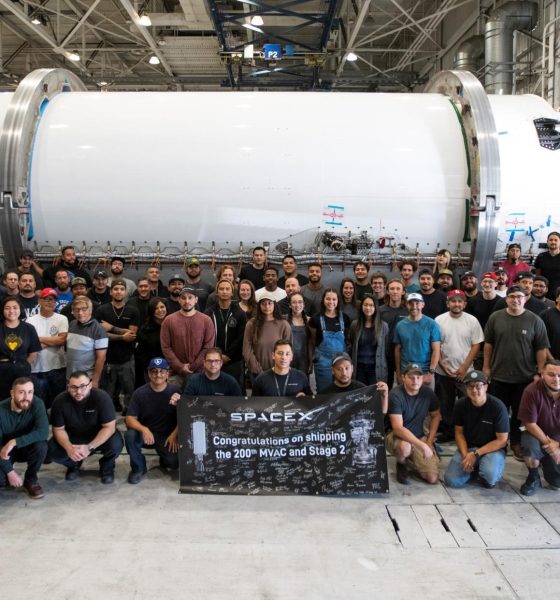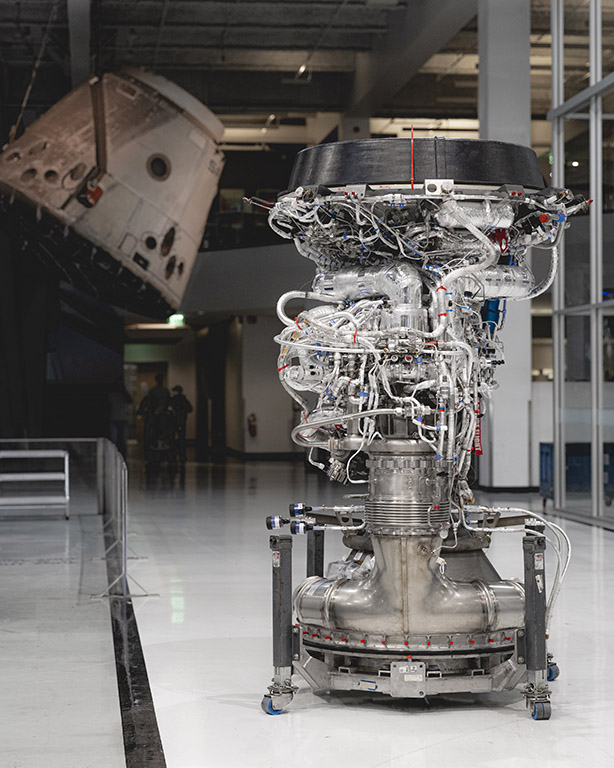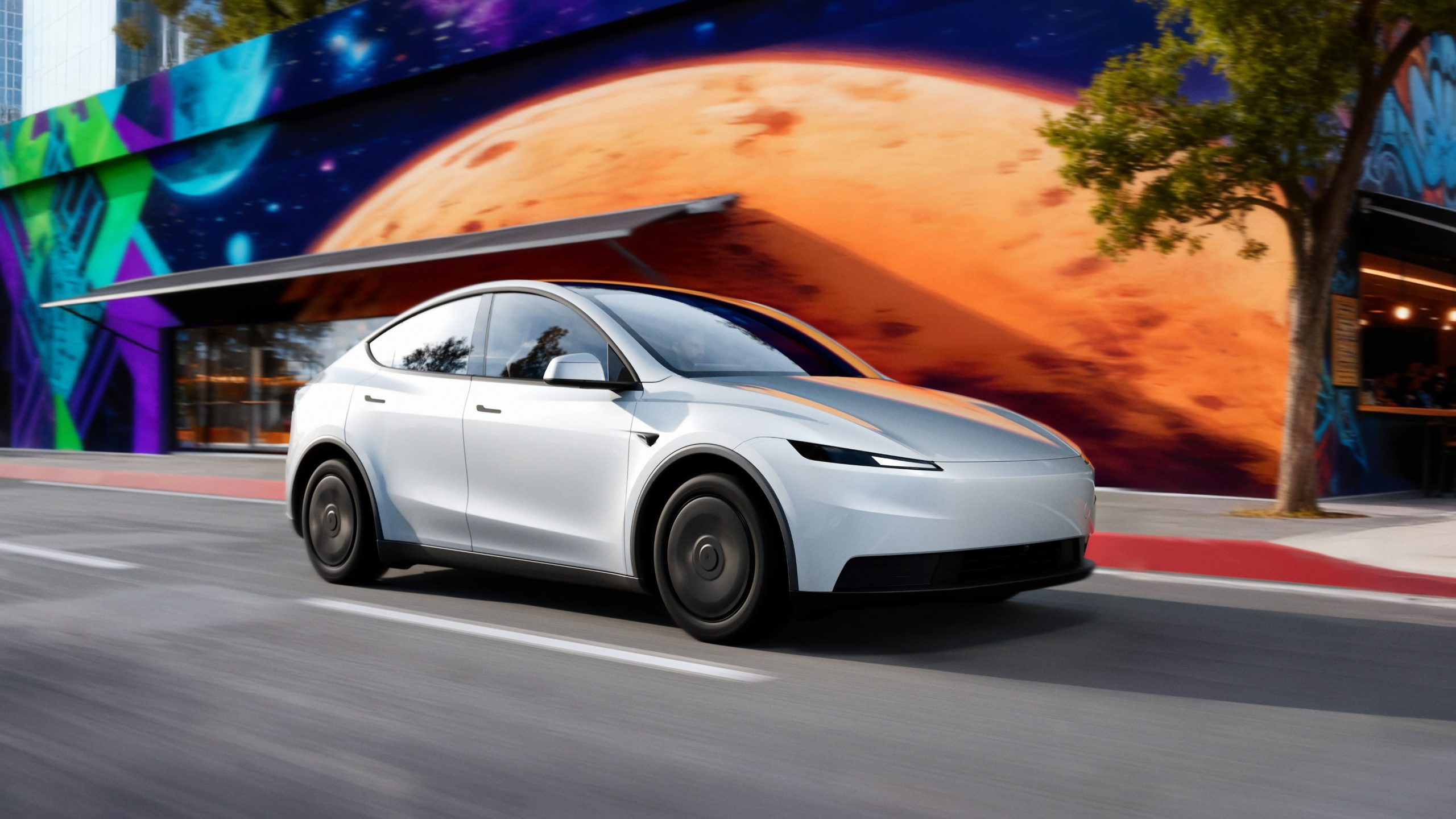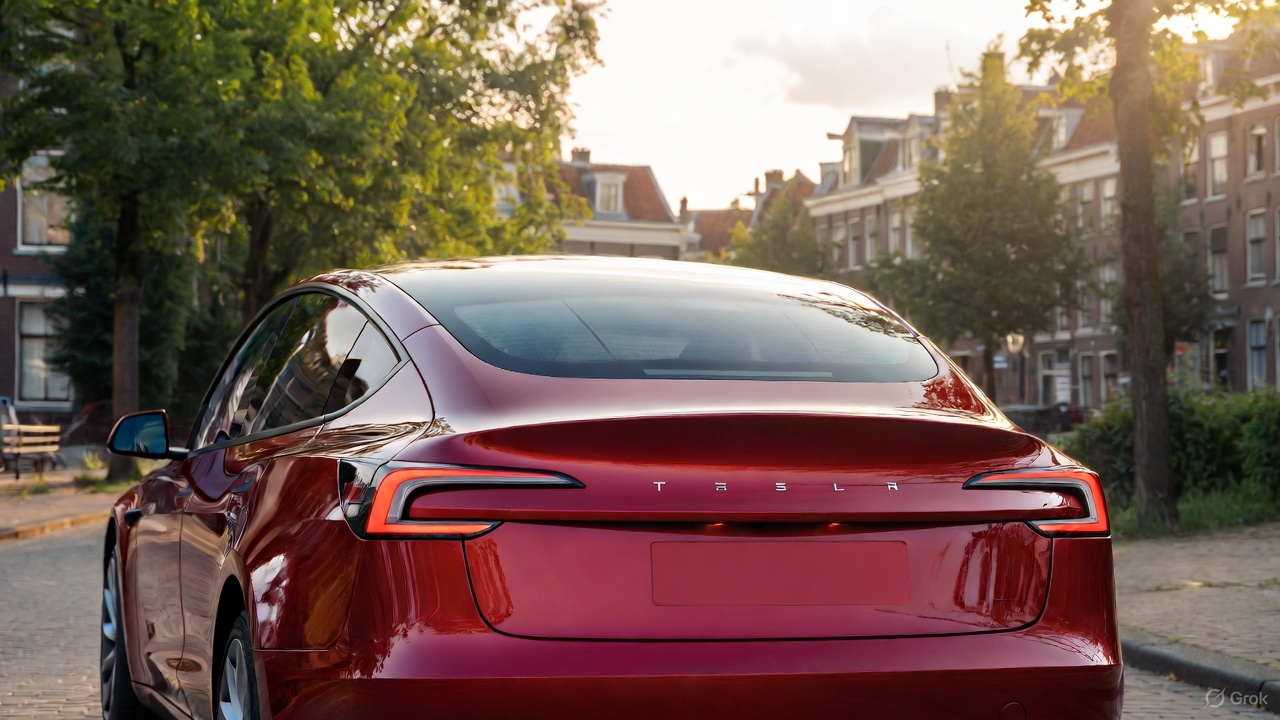

News
SpaceX ships 200th Falcon second stage, highlighting the flip-side of booster reuse
SpaceX has built and shipped its 200th Falcon second stage, highlighting the often underappreciated rocket’s record of achievement on the ground and in flight.
Approximately 13 years ago, in late 2009 or early 2010, SpaceX shipped the first flightworthy prototype of the first iteration of its Falcon 9 second stage. In June 2010, Falcon 9 lifted off on its inaugural test flight and, with the help of that second stage, successfully launched a boilerplate mockup of Dragon spacecraft into orbit. Since Falcon 9’s surprising inaugural success, SpaceX’s Falcon 9 and Falcon Heavy rockets have launched another 187 times for a total of 188 launches and 189 assembled rockets. Every one of those launches has required a new second stage, and all but one (Crew Dragon’s In-Flight Abort test) required a new Merlin Vacuum engine.
While SpaceX is most famous for the successful realization of rapidly reusable Falcon boosters, the company’s overall success is also inextricably linked to Falcon second stages, which are and always will be expended after every launch. For every spectacular Falcon booster landing or reuse record, a Falcon second stage either unceremoniously burns up in Earth’s atmosphere or finds itself stranded in orbit. As a result, even as SpaceX’s reusability has allowed it to launch more than ever before with a fleet of just 10-20 Falcon boosters, the company has had to expand the production of Falcon second stages extraordinary levels.
SpaceX just completed its 188th Falcon 9/Heavy launch, so the 200th flightworthy second stage and Merlin Vacuum (MVac) engine are probably scheduled to launch sometime in January 2023. In the last 365 days, SpaceX’s Falcon rockets have completed 59 successful orbital launches. Every launch has required a new second stage, so SpaceX, on average, has consistently built, shipped, and tested a new Falcon second stage every 6.2 days for more than a year.
Thanks to SpaceX’s record-breaking 2022 launch cadence, which has resulted in Falcon 9 launching more in one calendar year than any other rocket in history, the Falcon second stage has likely become the most-produced orbital rocket stage in decades. Barring surprises, SpaceX is on track to achieve CEO Elon Musk’s goal of 60 Falcon launches in 2022. But SpaceX isn’t done yet, and CEO Elon Musk says that the company is targeting “up to 100 launches” in 2023. After nearly doubling between early and late 2021, that will require Falcon second stage production to increase another ~67% year-over-year.
In its 12.5-year career, Falcon 9 has suffered three failures. In October 2012, on its third launch, one of Falcon 9’s nine Merlin 1C booster engines failed in flight. The main mission – a Dragon cargo mission to the International Space Station – was saved by the second stage, which autonomously compensated for the lost performance, but a secondary payload (Orbcomm’s first OG2 satellite prototype) was lost as a result. In June 2015, a faulty strut inside Falcon 9’s second stage caused a helium pressure vessel to break loose and rupture, destroying the rocket mid-flight. And in September 2016, during a prelaunch static fire test, a similar pressure vessel inside an upgraded Falcon 9’s second stage spontaneously sparked, causing an explosion that destroyed the rocket while it was still on the ground.
As a result, while problems with Falcon second stages have technically caused both of Falcon 9’s only catastrophic failures, it’s still true that a free-flying Falcon second stage has never failed in flight. The same is true for the second stage’s Merlin Vacuum engine: over hundreds of burns and more than 70,000 seconds of operation, MVac has never failed in flight.

After Falcon 9’s successful November 3rd, 2022 launch of the Eutelsat Hotbird 13G communications satellite, SpaceX’s Falcon rocket family has completed 160 launches without failure, arguably making it the most reliable rocket family in history. To achieve that feat with its partially-reusable Falcon 9 and Falcon Heavy rockets, SpaceX has had to master reusable and expendable orbital rockets to a degree that only a few other companies or space agencies in history can claim to have matched or exceeded, and that none have achieved simultaneously.

Elon Musk
Tesla CEO Elon Musk sends rivals dire warning about Full Self-Driving

Tesla CEO Elon Musk revealed today on the social media platform X that legacy automakers, such as Ford, General Motors, and Stellantis, do not want to license the company’s Full Self-Driving suite, at least not without a long list of their own terms.
“I’ve tried to warn them and even offered to license Tesla FSD, but they don’t want it! Crazy,” Musk said on X. “When legacy auto does occasionally reach out, they tepidly discuss implementing FSD for a tiny program in 5 years with unworkable requirements for Tesla, so pointless.”
I’ve tried to warn them and even offered to license Tesla FSD, but they don’t want it! Crazy …
When legacy auto does occasionally reach out, they tepidly discuss implementing FSD for a tiny program in 5 years with unworkable requirements for Tesla, so pointless. 🤷♂️
🦕 🦕
— Elon Musk (@elonmusk) November 24, 2025
Musk made the remark in response to a note we wrote about earlier today from Melius Research, in which analyst Rob Wertheimer said, “Our point is not that Tesla is at risk, it’s that everybody else is,” in terms of autonomy and self-driving development.
Wertheimer believes there are hundreds of billions of dollars in value headed toward Tesla’s way because of its prowess with FSD.
A few years ago, Musk first remarked that Tesla was in early talks with one legacy automaker regarding licensing Full Self-Driving for its vehicles. Tesla never confirmed which company it was, but given Musk’s ongoing talks with Ford CEO Jim Farley at the time, it seemed the Detroit-based automaker was the likely suspect.
Tesla’s Elon Musk reiterates FSD licensing offer for other automakers
Ford has been perhaps the most aggressive legacy automaker in terms of its EV efforts, but it recently scaled back its electric offensive due to profitability issues and weak demand. It simply was not making enough vehicles, nor selling the volume needed to turn a profit.
Musk truly believes that many of the companies that turn their backs on FSD now will suffer in the future, especially considering the increased chance it could be a parallel to what has happened with EV efforts for many of these companies.
Unfortunately, they got started too late and are now playing catch-up with Tesla, XPeng, BYD, and the other dominating forces in EVs across the globe.
News
Tesla backtracks on strange Nav feature after numerous complaints

Tesla is backtracking on a strange adjustment it made to its in-car Navigation feature after numerous complaints from owners convinced the company to make a change.
Tesla’s in-car Navigation is catered to its vehicles, as it routes Supercharging stops and preps your vehicle for charging with preconditioning. It is also very intuitive, and features other things like weather radar and a detailed map outlining points of interest.
However, a recent change to the Navigation by Tesla did not go unnoticed, and owners were really upset about it.
For trips that required multiple Supercharger stops, Tesla decided to implement a naming change, which did not show the city or state of each charging stop. Instead, it just showed the business where the Supercharger was located, giving many owners an unwelcome surprise.
However, Tesla’s Director of Supercharging, Max de Zegher, admitted the update was a “big mistake on our end,” and made a change that rolled out within 24 hours:
The naming change should have happened at once, instead of in 2 sequential steps. That was a big miss on our end. We do listen to the community and we do course-correct fast. The accelerated fix rolled out last night. The Tesla App is updated and most in-car touchscreens should…
— Max (@MdeZegher) November 20, 2025
The lack of a name for the city where a Supercharging stop would be made caused some confusion for owners in the short term. Some drivers argued that it was more difficult to make stops at some familiar locations that were special to them. Others were not too keen on not knowing where they were going to be along their trip.
Tesla was quick to scramble to resolve this issue, and it did a great job of rolling it out in an expedited manner, as de Zegher said that most in-car touch screens would notice the fix within one day of the change being rolled out.
Additionally, there will be even more improvements in December, as Tesla plans to show the common name/amenity below the site name as well, which will give people a better idea of what to expect when they arrive at a Supercharger.
News
Dutch regulator RDW confirms Tesla FSD February 2026 target
The regulator emphasized that safety, not public pressure, will decide whether FSD receives authorization for use in Europe.

The Dutch vehicle authority RDW responded to Tesla’s recent updates about its efforts to bring Full Self-Driving (Supervised) in Europe, confirming that February 2026 remains the target month for Tesla to demonstrate regulatory compliance.
While acknowledging the tentative schedule with Tesla, the regulator emphasized that safety, not public pressure, will decide whether FSD receives authorization for use in Europe.
RDW confirms 2026 target, warns Feb 2026 timeline is not guaranteed
In its response, which was posted on its official website, the RDW clarified that it does not disclose details about ongoing manufacturer applications due to competitive sensitivity. However, the agency confirmed that both parties have agreed on a February 2026 window during which Tesla is expected to show that FSD (Supervised) can meet required safety and compliance standards. Whether Tesla can satisfy those conditions within the timeline “remains to be seen,” RDW added.
RDW also directly addressed Tesla’s social media request encouraging drivers to contact the regulator to express support. While thanking those who already reached out, RDW asked the public to stop contacting them, noting these messages burden customer-service resources and have no influence on the approval process.
“In the message on X, Tesla calls on Tesla drivers to thank the RDW and to express their enthusiasm about this planning to us by contacting us. We thank everyone who has already done so, and would like to ask everyone not to contact us about this. It takes up unnecessary time for our customer service. Moreover, this will have no influence on whether or not the planning is met,” the RDW wrote.
The RDW shares insights on EU approval requirements
The RDW further outlined how new technology enters the European market when no existing legislation directly covers it. Under EU Regulation 2018/858, a manufacturer may seek an exemption for unregulated features such as advanced driver assistance systems. The process requires a Member State, in this case the Netherlands, to submit a formal request to the European Commission on the manufacturer’s behalf.
Approval then moves to a committee vote. A majority in favor would grant EU-wide authorization, allowing the technology across all Member States. If the vote fails, the exemption is valid only within the Netherlands, and individual countries must decide whether to accept it independently.
Before any exemption request can be filed, Tesla must complete a comprehensive type-approval process with the RDW, including controlled on-road testing. Provided that FSD Supervised passes these regulatory evaluations, the exemption could be submitted for broader EU consideration.








